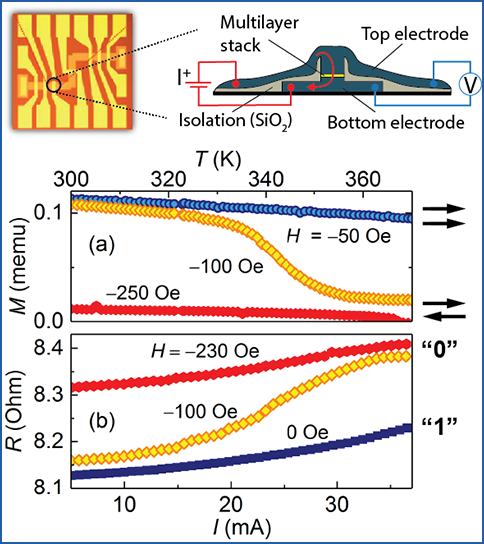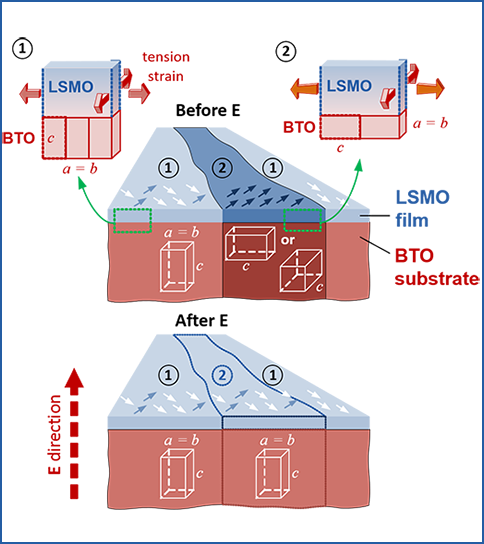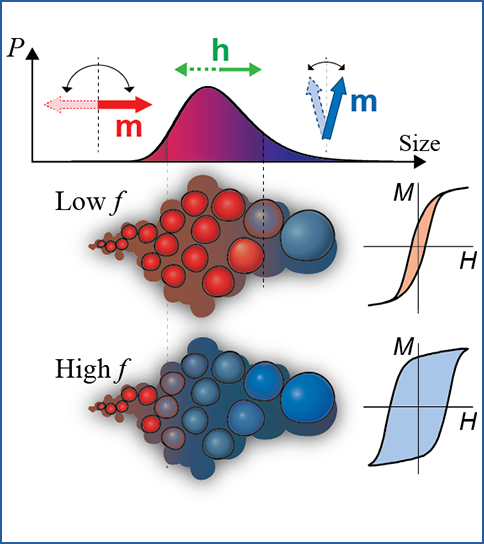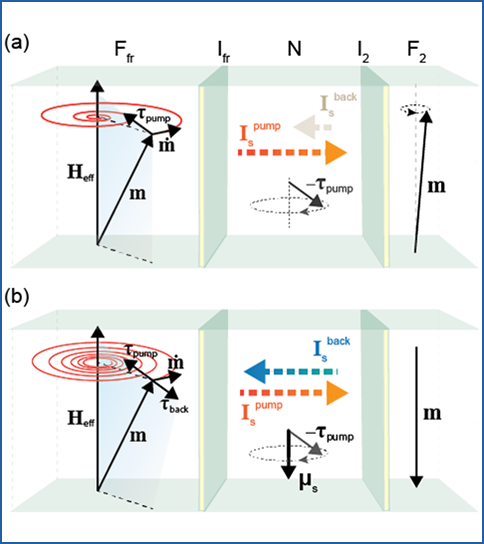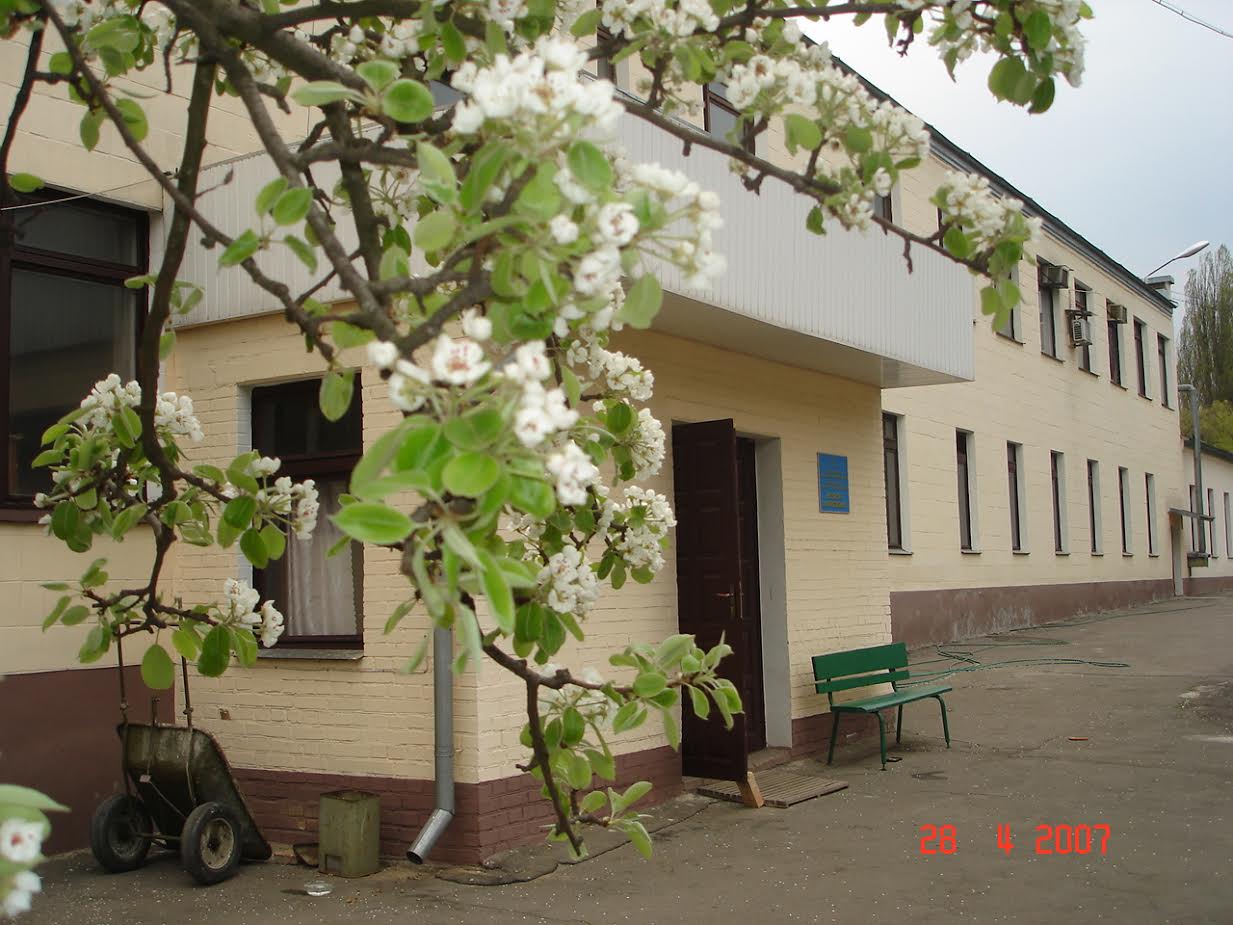Department 02 - Physics of Films
Researsh Directions:
|
Multilayer structures with thermo-induced switching of magnetic configuration |
|
|
|
Incorporation of thermo-sensitive components into magnetic nanostructures is one of the promising ways towards broadening the functionality of spintronic devices and improvement of their performance. This approach implies the use of internal heating (due to electrical-current Joule loss) or local external action (e.g. by laser pulse) to control a magnetic state and electrical resistivity of nanoobjects. The aim of our investigations is design and implementation of new principles for thermo-magnetic and thermo-electric manipulation of magnetic state, interlayer coupling and electrical resistivity in complex magnetic nanosystems. |
|
Single- and multicomponent (composite) nanostructures with multiferroic properties |
|
|
|
Multiferroics refer to the materials that simultaneously display two or more ferroic orders such as ferroelectricity, (anti-)ferromagnetism, and ferroelasticity. A strong coupling between multiple ferroic orders can produce additional functionalities, such as magnetoelectric effect, which allows control of electric polarization by magnetic field, or vice versa, the control of magnetization by electric field. Researchers of the Department are involved in the investigation of strain-mediated magnetoelectric effect in thin-film and nanoscaled complex-oxide heterostructures. |
|
Magnetic nanoparticles for biomedical applications |
|
|
|
Important implementation of magnetic nanoparticles in medicine is magnetic hyperthermia therapy which involves heat generation using magnetic nanoparticles in response to alternating magnetic field. To this end, the nanoparticles have to satisfy some specific requirements concerning both their inherent parameters (magnetic anisotropy, magnetization), as well as morphological characteristics (size, size distribution). The research in this direction is aimed at development of new approaches to optimization of nanomagnet parameters and design of novel ways for reliable control of their magnetic and thermal properties. The work is being carried on in close collaboration with the research groups from V.I. Vernadsky Institute of General and Inorganic Chemistry, and Institute of Physics. |
|
Magnetic interactions and dissipation processes in nanostructured and composite materials |
|
|
|
Engineering of high-speed spintronic devices and microwave electronic elements requires comprehensive understanding of the origin and sources of energy loss in complex magnetic systems. The researchers of the Department investigate mechanisms of magnetization dissipation in thin-film multilayers, systems with (synthetic) antiferromagnetic components, nanostructured composite materials. Particular emphasis is being made on novel effects, which are not inherent in bulk systems: various types of magnetic interactions at nanoscale, generation and dissipation of spin currents, etc. In-depth analysis of such effects will allow the optimization of operation speed and quality factors for a variety of applications in spintronics and microwave electronics. |
Selected publications:
1. A.I.Tovstolytkin et al. Unusual magnetic and calorimetric properties of lanthanum-strontium manganite nanoparticles. J. Magn. Magn. Mat. (2020).
2. Yu. O. Tykhonenko-Polishchuk et al. Spin-dependent scattering and magnetic proximity effect in Ni-doped Co/Cu multilayers as a probe of atomic magnetism. J. Appl. Phys. 125, 023907 (2019).
3. A. Kamra et al. Anisotropic and Controllable Gilbert-Bloch Dissipation in Spin Valves. Phys. Rev. Lett. 122, 147201 (2019).
4. A.I.Tovstolytkin et al. Nickel-zinc spinel nanoferrites: Magnetic characterization and prospects of the use in self-controlled magnetic hyperthermia. J. Magn. Magn. Mat. 473, 422 (2019).
5. S.O. Solopan et al. Core/shell architecture as an efficient tool to tune DC magnetic parameters and AC losses in spinel ferrite nanoparticles. J. Alloys Compd. 788, 1203 (2019).
6. Yu. Shlapa et al. Effect of Synthesis Method of La1-xSrxMnO3 Manganite Nanoparticles on Their Properties. Nanoscale Research Letters 13, 13 (2018).
7. D. Polishchuk et al. Magnetic Hysteresis in Nanostructures with Thermally Controlled RKKY Coupling. Nanoscale Research Letters 13, 245 (2018).
8. D. M. Polishchuk et al. Spin relaxation in multilayers with synthetic ferrimagnets. Phys. Rev. B 98, 144401 (2018).
9. T. Polek et al. Temperature-dependent magnetic and resistive switching phenomena in (La,Ba)MnO3/ZnO heterostructure. Superlattices and Microstructures 120, 525 (2018).
10. D. M. Polishchuk et al. Giant magnetocaloric effect driven by indirect exchange in magnetic multilayers. Phys. Rev. Materials 2, 114402 (2018).
Awards:
- 2018 - Head of the Department Prof. O.I. Tovstolytkin was awarded an Ivan Puluj Prize of the National Academy of Sciences of Ukraine for the Outstanding Scientific Works in Applied Physics.
- 2017 – Prof. A.M. Pogorily was honored with the Award of the NAS of Ukraine “For promotion of young scientists”.
- 2016 – PhDs I.M. Kozak and A.O. Kosogor were awarded the Prize of the Supreme Council of Ukraine for the most talented young scientists in the field of fundamental and applied researches and scientific developments for the work “Magnetic and structural properties of functional materials in the vicinity of phase transitions”.
- 2016 – Prof. A.I. Tovstolytkin was honored with the Certificate of Outstanding Contribution in Reviewing from Journal of Alloys and Compounds (Elsevier, Amsterdam, The Netherlands).
- 2014 – PhDs T.I. Polek and D.M. Polishchuk were awarded the Prize of the President of Ukraine for young scientists for the work “Materials with colossal magnetoresistance: transformation of magnetic state induced by chemical substitutions and scaling factors”
- 2013 – Profs. A.M. Pogorily (Institute of Magnetism), S.I. Tarapov (O.Ya. Usikov Institute of Radiophysics and Electronics) and D.P. Belozorov (Institute for Theoretical Physics NSC “Kharkov Institute of Physics and Technology”) were awarded S.Ya. Braude Prize of the NAS of Ukraine for the outstanding scientific works in radiophysics and radioastronomy.
- 2008 – Profs. A.M. Pogorily, V.F. Los and Ya. Bazaliy were awarded I. Pului Prize of the NAS of Ukraine for the outstanding scientific works in applied physics.
History of department:
Department of Physics of Films was one of the three departments, which had formed the foundation for establishing Institute of Magnetism in 1995.
The history of Department starts from 1962. This year the Laboratory of Physics of Films, which was a part of Department of Technology of Alloys in Institute of Metal Physics (at present – G. V. Kurdyumov Institute of Metal Physics of the NAS of Ukraine), had been transformed into Department of Physics of Films. The first head of the Department was Prof. A. G. Lisnyk. In 1984 Prof. A.M. Pogorily become a new head of the transformed Department. Since 2016, the Department is headed by Prof. A.I. Tovstolytkin.


